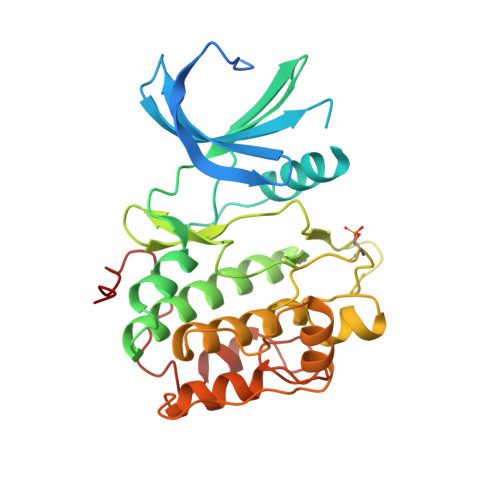Molecular Mechanism of Regulation of the Atypical Protein Kinase C by N-Terminal Domains and an Allosteric Small Compound.
Zhang, H., Neimanis, S., Lopez-Garcia, L.A., Arencibia, J.M., Amon, S., Stroba, A., Zeuzem, S., Proschak, E., Stark, H., Bauer, A.F., Busschots, K., Jorgensen, T.J., Engel, M., Schulze, J.O., Biondi, R.M.(2014) Chem Biol 21: 754
- PubMed: 24836908
- DOI: https://doi.org/10.1016/j.chembiol.2014.04.007
- Primary Citation of Related Structures:
4CT1, 4CT2 - PubMed Abstract:
Protein kinases play important regulatory roles in cells and organisms. Therefore, they are subject to specific and tight mechanisms of regulation that ultimately converge on the catalytic domain and allow the kinases to be activated or inhibited only upon the appropriate stimuli. AGC protein kinases have a pocket in the catalytic domain, the PDK1-interacting fragment (PIF)-pocket, which is a key mediator of the?activation. We show here that helix ¦ÁC within the PIF-pocket of atypical protein kinase C (aPKC) is the target of the interaction with its inhibitory N-terminal domains. We also provide structural evidence that the small compound PS315 is an allosteric inhibitor that binds to the PIF-pocket of aPKC. PS315 exploits the physiological dynamics of helix ¦ÁC for its binding and allosteric inhibition. The results will support research on allosteric mechanisms and selective drug development efforts against PKC isoforms.
Organizational Affiliation:
Research Group PhosphoSites, Department of Internal Medicine I, Universit?tsklinikum Frankfurt, Theodor-Stern-Kai 7, 60590 Frankfurt, Germany.


















